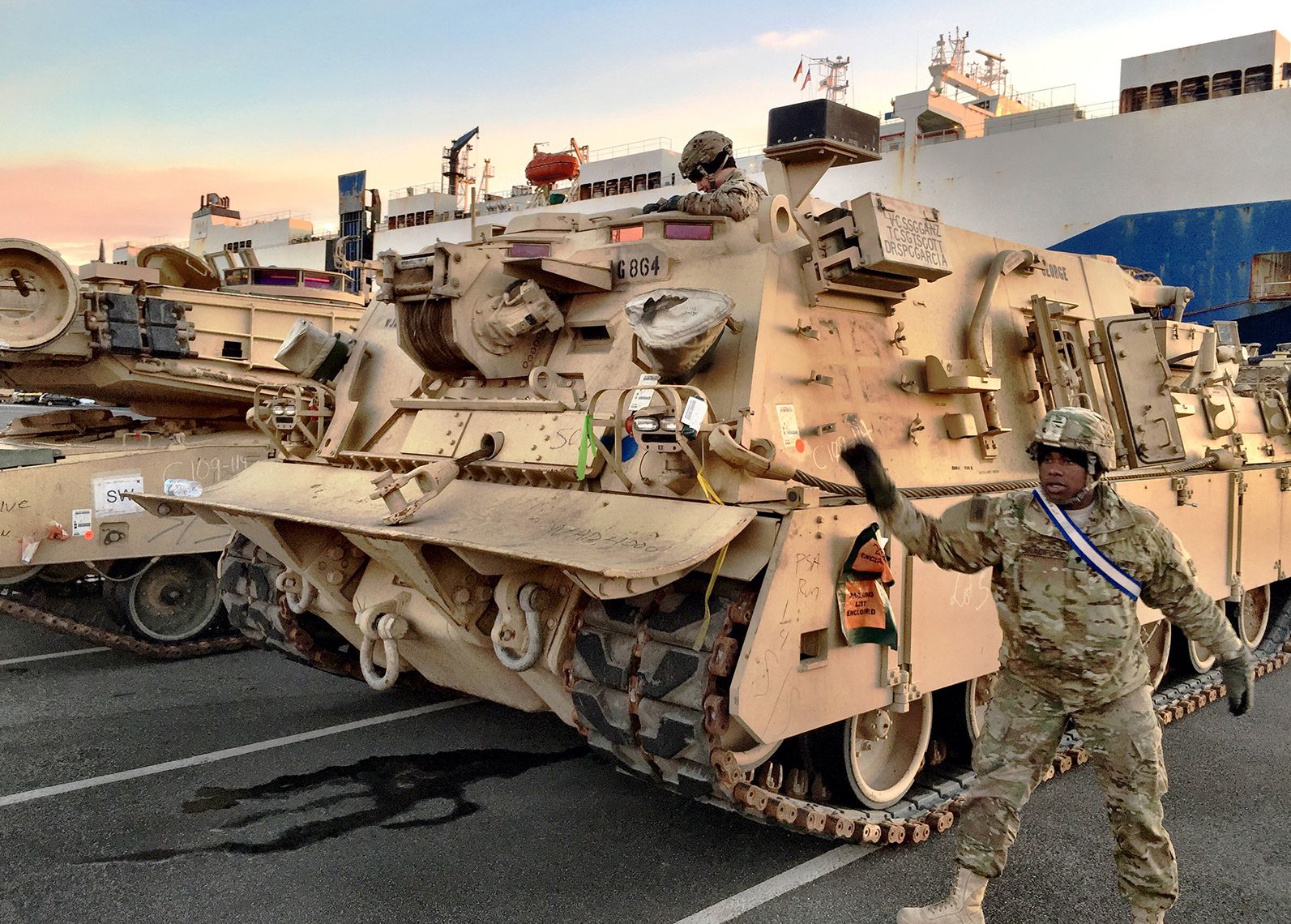The Army’s 3rd Armored Brigade Combat Team, 4th Infantry Division, is ready for any mission, U.S. European Command’s deputy commander, Air Force Lt. Gen. Timothy M. Ray, said at the unit’s consolidation and validation event here Jan. 30, 2017.
“These ‘Iron Soldiers’ … send a clear signal of our commitment as they round out our joint team’s capability in a very significant way,” the general said. “The events in 2014, and the trans-Atlantic declarations from the Wales and Warsaw Summits, demonstrate the indivisibility and unity of the alliance in light of Russia’s invasion into Ukraine. These events forged a commitment, and a plan, to build our defense and deterrence posture in Europe.”
Ray added, “Know that our commitment to defense is rock-solid. We must maintain the territorial integrity of our alliance and maintain a Europe that is whole, free, prosperous and at peace.”
The unit’s deployment to Europe is part of Operation Atlantic Resolve, which was designed to reassure NATO allies and partners in the region after Russia invaded Ukraine. Ray said the arrival of the combat team was just one aspect of America’s commitment to the region.
Increased Presence
“The thousands of Iron Soldiers here are a key part of our joint land, naval, air, space and cyberspace team,” the general said. “Be assured, the full weight of the U.S. military stands behind these sentinels of freedom.”
Deployed from Fort Carson, Colorado, the 3,500 soldiers and 2,000 vehicles of the 3rd Armored Brigade Combat Team join a recently increased land, sea and air presence in the region. The arrival of the 3rd ABCT begins a series of back-to-back rotations of U.S. troops and equipment to the region. The soldiers and vehicles will mass in Poland and then disperse via convoy across seven locations in Eastern Europe for training and exercises with European allies.
These forces represent one element of America’s commitment to European security, and it is ready to defend that security if called upon, officials said.
The U.S. forces, officials added, will train with U.S. allies and partners, ultimately leading to greater interoperability.
“We are invested … from infrastructure upgrades across the continent, to airfields and ranges; we’re also prepositioning supplies and equipment and exercising with our allies and partners,” Ray said in a previous statement. “We will also increase the scope and complexity of many exercises in our portfolio focusing on joint interoperability, missile defense and crisis-response operations.”










